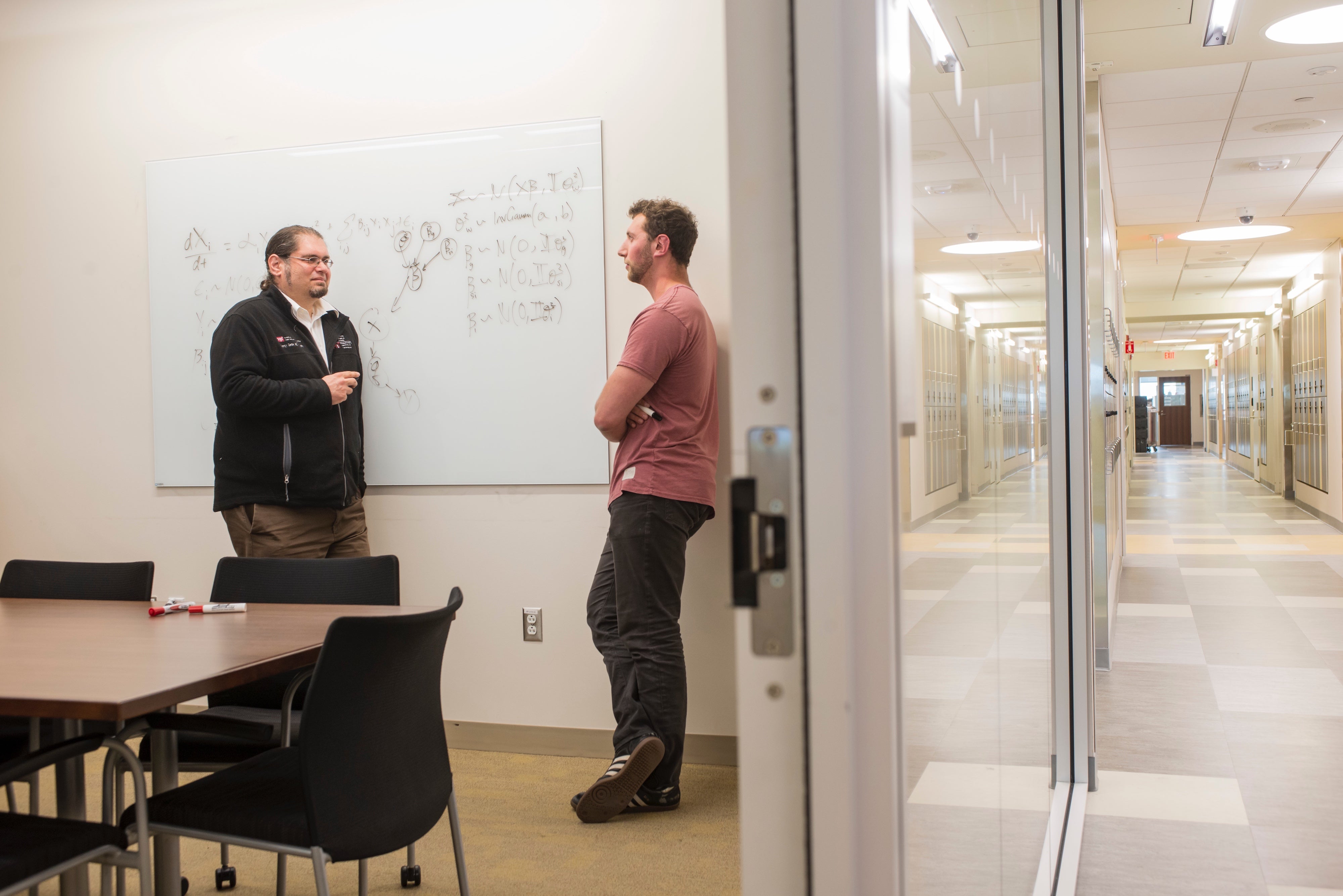News & Highlights
Topics: Clinical & Translational Research, Five Questions, Microbiome, Pilot Funding, Technology
Five Questions with Georg Gerber
Our pilot grant awardee discusses his research as a microbiome computational biologist and how the COVID-19 pandemic is impacting his work.

Georg Gerber, MD, PhD, MPH, is chief of Brigham and Women’s Division of Computational Pathology and HMS associate professor of pathology. A microbiome computational biologist, his project, “Predicting C. difficile recurrence from the microbiome using interpretable machine learning models,” received pilot funding through our Translational Innovator program. His nonlinear career path began with computational biology research, shifted to Hollywood, then came to the microbiome.
How has the epidemic altered your research? Any plans to study COVID-19 in relation to the gut microbiome?
The lab side of my work has essentially shut down, but the computational side is still going, though it certainly slowed while we figured out how to work productively from home. We have been thinking about studying COVID-19. I suspect that the virus could have different outcomes depending on a person’s microbiome. Some people have an immunologic overreaction, a cytokine storm, and we know that the gut microbiome is involved in regulating immune response. I would also speculate that there are deaths or at least morbidity being caused by a secondary infections. And depending on your microbiome, you can have more or less susceptibility to those infections.
Talk a bit about your research on the microbiome and the project for which you received Harvard Catalyst funding?
I got interested in the microbiome when I was a resident at the Brigham and met Lynn Bry, MD, PhD, on my clinical microbiology rotation. Our discussions about it fascinated me. Here is an ecology living in the human body with diverse organisms dependent on each other, with a complexity that really needs computational methods to understand. You have to look at the system holistically because of that complexity. I’ve been focused for almost 10 years now on the microbiome.
The C. diff project funded by Harvard Catalyst came out of ongoing work in collaboration with Lynn Bry and Jessica Allegretti, MD, MPH. We’ve been following about 75 C. diff patients longitudinally to determine the risk factors for its recurrence, which happens in about 25% of cases. Based on our findings about what’s happening in these people’s microbiomes, Lynn has gone back to her mouse model to develop a treatment.
We first did sequencing of microbial genes to look at which bacteria are present and then expanded to looking at metabolites, which we think are very important to the risk of recurrence. We’ve cataloged the microbiome over time in these 75 patients and are now crunching data to come up with a computational model for predicting recurrence.
“Here is an ecology living in the human body with diverse organisms dependent on each other, with a complexity that really needs computational methods to understand.”
Prior to coming to MIT and HMS for your PhD and MD, you applied 3D graphic technologies to create Hollywood films that starred such actors as Denzel Washington, Russel Crowe, and Danny DeVito. Why the detour and return to clinical research?
The COVID-19 outbreak epitomizes why I wanted to return. I started out as an undergraduate mathematics major with an interest in HIV and immunology, infectious disease, and epidemics. I got a MPH in infectious diseases. But at that time there was declining interest in infectious diseases, which is one factor that prompted me to look at other career opportunities.
When I started out in Hollywood in 1993, it was via 3-D graphics, which was something I had been doing research in, using graphical processing units (GPUs). My first company was founded on the idea of using these cheap consumer-grade GPUs to do Hollywood level special effects. GPUs are much more powerful now and even cheaper, which has enabled the deep learning revolution. Today, I’m using them in biomedical research. So my career path isn’t so disconnected after all!
How might your new division of computational pathology advance precision medicine?
The division is using advanced computational tools to better understand the mechanisms of disease and translate that to better diagnosis and treatment. We’re focusing on three areas. Using microscopic imaging and machine learning algorithms to make diagnoses faster, cheaper, and better, and to learn new things about diseases. The microbiome, of course. And computational immunology. With all the data sources available now, we can start looking at the immune system in great detail. This has all sorts of clinical applications in terms of immune therapies for cancer, applications in infectious disease, and overlap with the microbiome.
Like with C. diff, if we know with precision who’s more likely to recur, only they need to be treated. There are good treatments for C. diff reoccurrence, but they’re expensive and have side effects. Precision medicine also has a population management piece. Can insights at the individual patient level–say, trends in symptoms being seen—trickle up to inform decisions about populations, so the healthcare system can be more proactive?
You have three advanced degrees. Has this diverse training influenced your approach to clinical problems?
It’s been a long path to integrate my interests! Mathematics is a systematic way to think about complex problems and generalize understanding. So I take a systematic, holistic approach, that’s very complementary to molecular biology, which is very reductionist.

